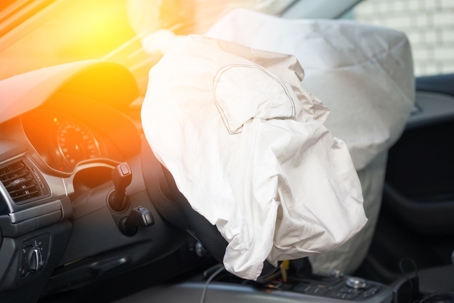Being involved in a car accident is stressful enough, but when the other driver flees the scene, it can feel overwhelming and frustrating. You're left asking, "Who will pay for the damage? What about my medical bills?" The good news is that you may still have options to pursue compensation, even if the hit-and-run driver isn’t caught.
Understanding what steps to take and what resources may be available is key to navigating this challenging situation.
What Is a Hit-and-Run Accident?
A hit-and-run happens when a driver causes an accident and leaves the scene without providing their contact or insurance information. This is not only irresponsible but also illegal in most places. Unfortunately, many hit-and-run victims feel helpless when this occurs, unsure of how to cover their losses or who to turn to for help.
Can You Still Get Compensation?
Yes, you can potentially receive compensation even if the at-fault driver isn’t found. Here are some options you may have:
1. Uninsured Motorist Coverage
One of the most common ways to recover damages after a hit-and-run is through your own car insurance policy, specifically your uninsured motorist (UM) coverage.
Uninsured motorist coverage is designed to help in situations where the at-fault driver either didn’t have insurance or can’t be identified, such as in a hit-and-run accident. Depending on your policy, it can cover:
- Medical expenses
- Lost wages
- Pain and suffering
- Property damage (if uninsured motorist property damage coverage is included)
Check your policy or contact your insurance company to confirm whether you have this type of coverage.
2. Collision Coverage
If you have collision coverage, your insurance can help pay for damages to your car, regardless of who was at fault. While this does not address medical bills or other losses, it can be a helpful option for repairing your vehicle after a hit-and-run.
Keep in mind that using collision coverage often comes with a deductible that you will need to pay out of pocket.
3. MedPay or Personal Injury Protection (PIP)
Some states require drivers to carry medical payment (MedPay) coverage or personal injury protection (PIP). If you have either of these, they can help cover immediate medical expenses related to your injury. Unlike standard liability coverage, these policies apply no matter who was at fault.
4. Victim Compensation Programs
If your injuries from the hit-and-run are severe and you're unable to find other sources of compensation, some states offer victim compensation programs. These programs are often designed to assist those who have been victims of crimes, including hit-and-run incidents, by providing financial assistance for medical bills and other expenses.
5. Identifying the Driver
Although it isn’t always possible, identifying the hit-and-run driver would allow you to pursue a claim directly against their insurance or even file a personal injury lawsuit. If witnesses or surveillance footage can help track down the responsible party, this could be a key to recovering damages.
Steps to Take After a Hit-and-Run
After the initial shock subsides, acting quickly to strengthen your claim is important. Here’s what you should do:
1. Call the Police Immediately
Filing a police report is critical. Be sure to include as much detail as you can about the accident and the driver, such as the make and model of the car, the license plate (if you caught it), or any distinguishing features. A police report is often required by your insurer when you file a claim.
2. Document the Scene
If it’s safe to do so, take photos or videos of the accident scene, your vehicle's damage, and any visible injuries you’ve sustained. These images can serve as critical evidence later.
3. Speak to Witnesses
If there were any witnesses, gather their names and contact information. Eyewitness statements can be invaluable, especially if they saw the fleeing vehicle or driver.
4. Seek Medical Attention
Even if you don’t think you’re seriously injured, seeing a doctor after an accident is important. Some injuries, like whiplash or concussions, may not show symptoms immediately, but prompt medical attention is vital for your health and for creating a medical record that supports your claim.
5. Contact Your Insurance Company
Notify your insurance company as soon as possible about the accident. Provide them with all the details you’ve gathered, including the police report, photos, and witness information.
6. Consult a Legal Professional
Navigating the legal options after a hit-and-run can be difficult, especially when insurance companies are involved. A skilled personal injury attorney can analyze your case, negotiate with insurers, and explore alternative compensation options that you might not have considered.
Corpus Christi Hit-and-Run Accident Attorneys
Navigating the aftermath of a hit and run accident can be a daunting experience, but understanding your options for compensation and taking proactive steps can make a significant difference. Whether you're exploring uninsured motorist coverage, personal injury protection, or state-specific programs, having a clear understanding of your rights and resources is crucial. At Brunkenhoefer, P.C. Injury Attorneys, we are committed to helping victims of hit and run accidents in Corpus Christi, Texas, secure the compensation they deserve. Our experienced team is here to guide you through the legal process, providing the support and advocacy you need to achieve a favorable outcome. Contact us today at (361) 310-5299 to learn more about how we can assist you in your journey towards recovery.

